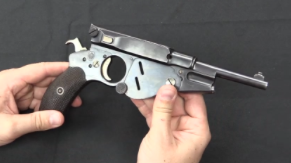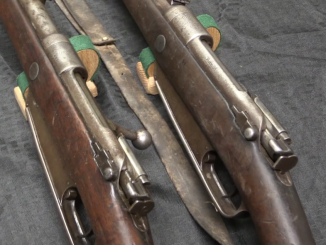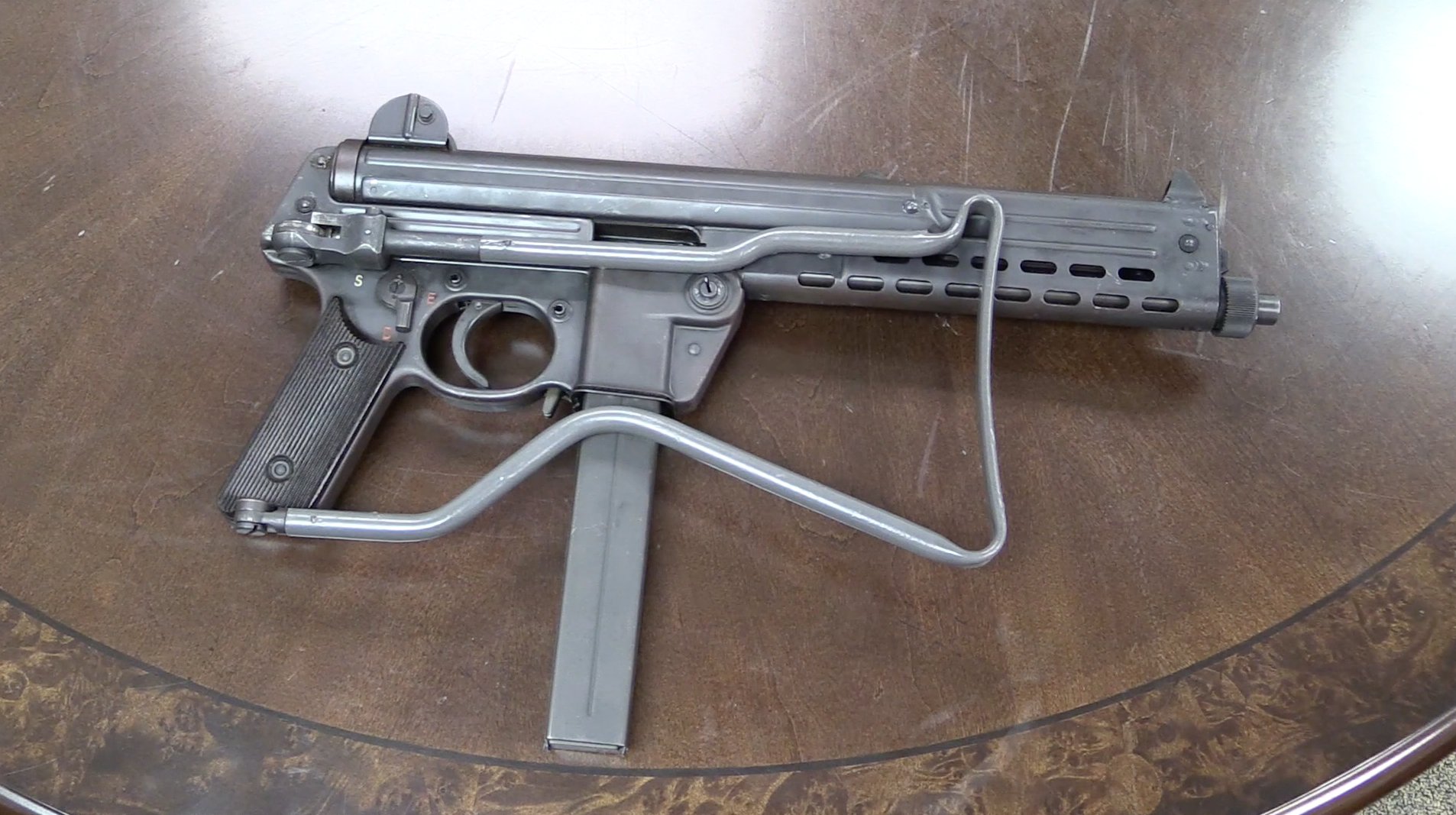We had the chance to shoot a couple of the lesser-known submachine guns used in World War II, a German MP41 and an Italian Beretta 38/44. Both are pretty typically submachine guns, firing 9mm Luger from open bolts with fixed firing pins and simple blowback actions. They both have solid wood stocks (the MP41 is basically an MP40 with that in place of an underfolder) and bottom-mounted magazines. The MP41 uses a semi/full selector button, while the Beretta has separate triggers for semi and full auto fire.
The MP41 is a fine weapon, but my preference is for the Beretta. It is a bit shorter and handier, and just feels more controllable in my hands. This particular model (the 38/44) was the final iteration of the Beretta M38 family used during the war, and it would continue to be produced for international sale during into the 1960s under the designations A4 and A5.




So I’ve always wondered what the reasoning for the MP41 was?
I’ve heard people say it was for crowd control or similar – using the sturdier wooden but to push and beat a demonstrating crowd or mob. But I dunno about that. Can’t imagine the Wehrmacht using anything other than brute force to put down an uprising or quell a demonstration. Anyone know?
The MP41 was mainly used by the SS (and similar groups). The SS had its own budget and purchasing organization. A handful of “showcase” SS units often got first rate gear (for propaganda purposes), but the run of the mill SS units often ended up with the left overs that the army didn’t want. That included foreign gear and items from German vendors who weren’t successful in winning army contracts.
I don’t know what the contract with Erma and their subcontractors was, but it’s quite possible that army got first pick of any and all MP38/40 production. The MP41 was produced by an MP38/40 subcontractor and I think they ended being taken to court by Erma (the owner of the MP38/40) over it.
I think the reason for the wooden stock on the MP41 was that the folding metal stock on the MP38/40 was not rugged enough in field conditions even for regular infantry. A “quick fix” without redesigning the whole gun would have been to simply replace the folding metal stock with a conventional (for the time) wooden one.
The MP41 was pretty much a patent infringement by Hugo Schmeisser. The following is pure speculation on my part, but it seems to me that Hugo Schmeisser was put off by the fact that ERMA was supplying submachine guns to the Wehrmacht and not him, the inventor of the submachine gun. So he took the MP40, stuck it in an MP28 stock with the MP28 selector switch, and called it the MP41. The gun was accepted by the SS (which did not go through the same channels as the Wehrmacht to get their equipment and weapons) and was in production for a little while, but ERMA filed a lawsuit against Schmeisser and won, thus ending production.
I spent a great day at a strip mine once with a Model 38 and a Model 38/42, both great guns. The model 38 is a fine piece of craftsmanship, a real pleasure to fire. It’s a bit large but that makes it a very stable platform. The 38/42 is definitely a wartime production but lacked nothing at all in terms of performance and was a much handier weapon. The owner of these said that they were one of the favorite battlefield pick-ups of Allied troops. I have no independent verification of that but on the same day we were shooting a Thompson and an MP-40 and of the four I would have had no problems getting stuck with that “ugly” 38/42.
I would be most interested in seeing the trigger operation of the Beretta 38/44. I’ve seen photos and schematics, but a video of how it operates the disconnector differently with each trigger would be great.
Also, your cameraman is a real trouper, keeping the important things in frame and focused. Kudos.
I like how the MP38/40/41 had a left hand charging handle for ‘tactical’ reloads. This seems common with German arms from the WW2 era, which didn’t seem to catch on with other nations until the end of the Cold War.
And about the magazines? German weapons used single feed position and (I suspect) Beretta guns used double feed. Am I wrong? Sometimes the single feed position magazine is refered as the responsible for many feed problems and they are, of course, more expensive.
Nice to see a comparative article about two excellent SMG’s. It’s really hard to deliberately choose between the two in a “if you had to pick one” scenario, but I would have to give the nod to the Beretta M38/44 when push comes to shove for all the reasons previously mentioned.
I seem to recall that the Indonesian Armed Forces purchased a batch of the Berettas in the 1950’s and / or 1960’s, so some of these would have been the A4 or A5 models Ian is referring to. I’m wondering what the Indonesian Government did with all those Berettas once they had modernized their small-arms inventory. It’s a long shot, but between one thing and the next, this may just possibly mean that some of these fine ex-military SMG’s are, or at least have been, available on the surplus market. Just food for thought :).